|
3/22/04
The Puzzle
Project started as an offshoot of the Pipe Project. Five weeks
ago, my friend Sam, who has a woodshop, was helping me make
little wooden houses for a Pipe Project construction project.
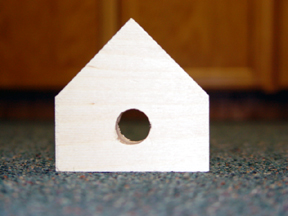
In the
process, we generated quite a few little wooden triangles
when we cut the wood houses to create a roof. I figured that
these might be used for something, so I took them home with
me along with the houses. There was some potential here for
making something interesting, or so I thought.
I got
some nontoxic markers and colored the triangles red/blue and
green/yellow.
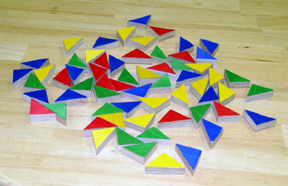
Then I
played around putting the triangles into patterns.
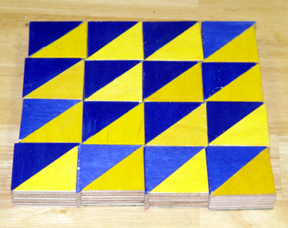
Using
PowerPoint, I generated several patterns for the students
to construct using the triangles.
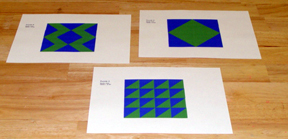
Some of
the students have found these puzzles to be easy to put together,
others have found them to be challenging.
My friend
Sam came up with the idea of creating puzzles out of pieces
of scrap wood. Putting the pieces together requires an attention
to detail that is far more challenging than a typical jig
saw puzzle. You need to attend to details such as the direction
of the wood grain as well as whether the edge of the piece
is rough or smooth so that you can tell whether all of the
pieces are facing up or down.
Here is
a simple example. Even though there are only four pieces,
this puzzle takes some effort to complete.
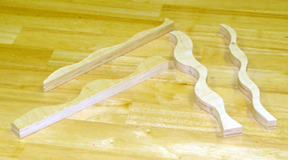
Here is
the result.

Sam had
another idea of using some PVC pipe to make a puzzle. I came
up the idea of creating a stand so that the pipe pieces could
be stacked without falling apart.
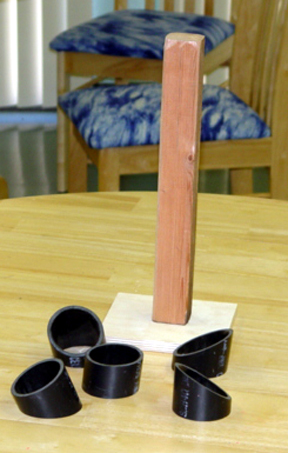
Assembling
this puzzle is more challenging than it looks. It is possible
to put the pieces together so that they all fit, but still
have one piece left over. The trick to getting it right is
to use the printing on the side of the pipe as a guide.
4/2/04
I took
some pictures today of students solving the wood puzzles.
Here is the progress that one student made in putting together
a block of wood that had been cut both horizontally and vertically:
This puzzle
is made out of a piece of firewood:
6/3/04
I made
two really challenging puzzles from two pieces of wood that
were the same size, and then I mixed them together. One had
26 pieces, and the other had 28 pieces. I thought that it
would be nice to offer a really challenging puzzle and promised
the students who were able to put them together that they
would earn $1.00 of Study Club money. All of the other puzzles
are worth .02 to .10 cents.
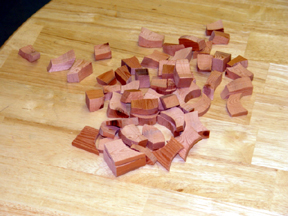
Two students
so far have been able to put the puzzles together. The first
student was able to accomplish the task in about 3 hours.
The second student took a bit longer.
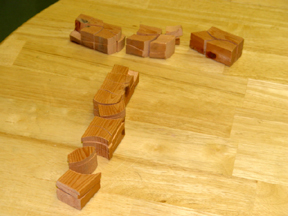 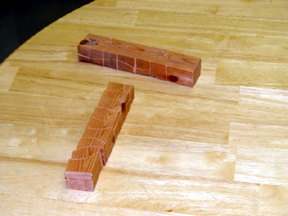
|

